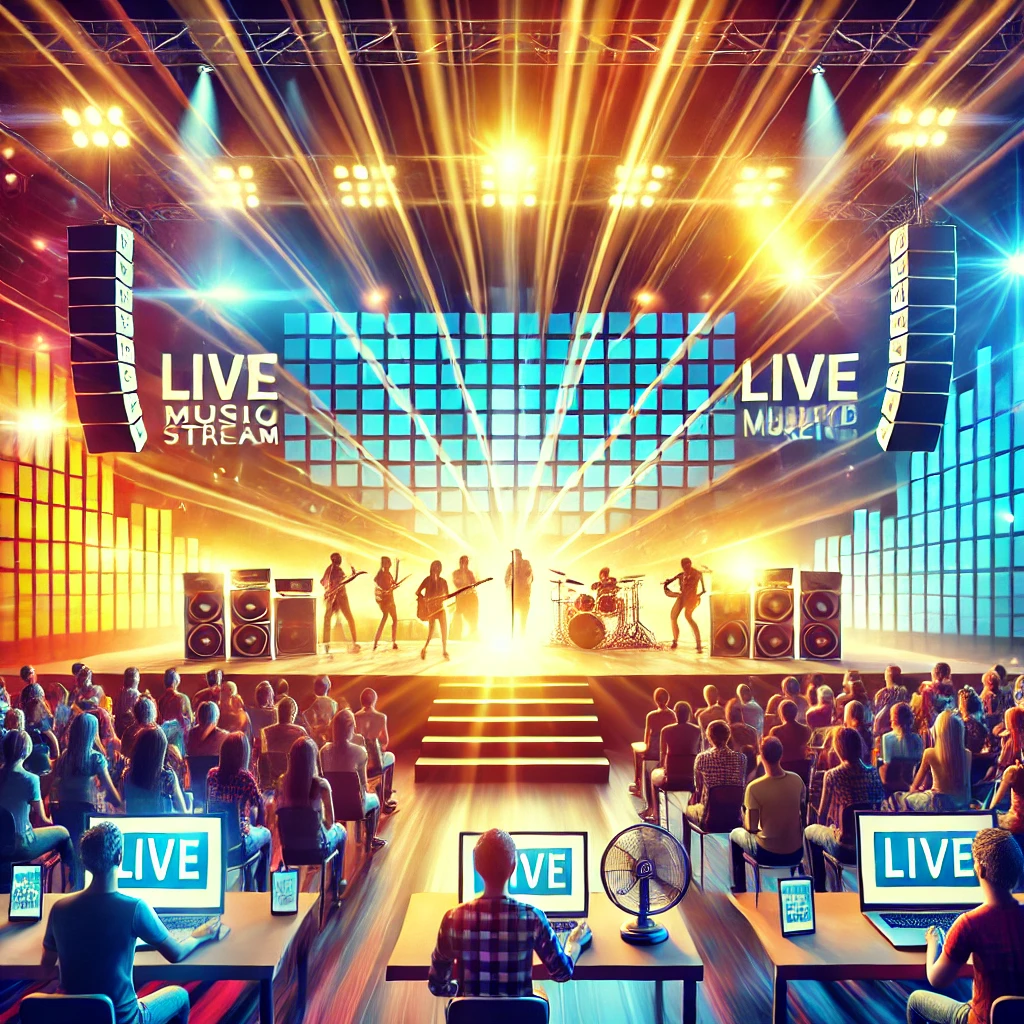The Rise of Live Music Broadcasts
In recent years, live music broadcasts have transformed the way fans experience concerts, breaking down geographical barriers and making live performances accessible to a global audience. This shift, fueled by advancements in streaming technology and changes in audience preferences, has created a new paradigm for the music industry. Fans no longer need to travel or spend a fortune on tickets to enjoy their favorite artists; instead, they can tune in from the comfort of their own homes, experiencing the energy of live performances in real-time.
The Technology Behind Live Music Broadcasts
Streaming Platforms and Their Role
The surge in live music broadcasts is closely tied to the development of high-quality streaming platforms. Services like YouTube, Twitch, and specialized platforms such as StageIt and Veeps have become integral to the live music experience. These platforms provide artists with the tools to reach their audience directly, offering options for live chat, interactive features, and even virtual meet-and-greets.
Moreover, the integration of advanced video and audio technologies has elevated the quality of live music broadcasts. High-definition video, multi-camera setups, and crystal-clear audio streams ensure that the audience receives an immersive experience that closely mimics being at the venue. The importance of seamless streaming cannot be overstated, as buffering and low-quality streams can significantly detract from the viewer’s experience.
The Impact of the COVID-19 Pandemic
A Shift in the Music Industry
The COVID-19 pandemic accelerated the adoption of live music broadcasts as lockdowns and social distancing measures forced artists and venues to cancel in-person events. What began as a necessity quickly became a preferred method for artists to connect with their fans. Major music festivals, including Coachella and Glastonbury, pivoted to virtual formats, drawing millions of viewers from around the world.
During this period, artists experimented with new ways to engage their audiences. Intimate home performances, virtual concerts with elaborate stage designs, and collaborations with other artists became commonplace. This period of innovation highlighted the versatility of live music broadcasts and opened up new revenue streams for artists through ticketed online events and virtual merchandise sales.
The Future of Live Music Broadcasts
Hybrid Events and the Return of In-Person Concerts
As the world slowly returns to normalcy, the future of live music broadcasts appears to be a blend of virtual and in-person experiences. Hybrid events, where fans can choose to attend in person or watch the live stream, are becoming increasingly popular. This model allows artists to maximize their audience reach while providing fans with flexibility.
The ongoing advancements in virtual and augmented reality (VR/AR) technology also promise to take live music broadcasts to the next level. VR concerts, where fans can experience a performance in a fully immersive 3D environment, are already in development. These technologies could redefine the live music experience, offering fans an unprecedented level of interactivity and engagement.
The Economic Implications
Revenue Streams for Artists
Live music broadcasts have created new economic opportunities for artists. While traditional concert tours remain a significant source of income, live broadcasts offer an additional revenue stream. Ticketed online events, pay-per-view concerts, and virtual fan experiences have become lucrative for many artists, especially those who have cultivated a strong online following.
Additionally, sponsorship and advertising within live broadcasts present another avenue for revenue. Brands are increasingly partnering with artists to reach engaged audiences during live events, offering everything from product placements to sponsored segments. This symbiotic relationship between artists and brands is likely to grow as live music broadcasts continue to evolve.
The Audience Perspective
Accessibility and Inclusivity
One of the most significant benefits of live music broadcasts is the increased accessibility they provide. Fans who may not have the means to attend a concert due to financial, geographical, or physical constraints can now enjoy live performances from anywhere in the world. This inclusivity has expanded the audience base for artists, allowing them to connect with fans who might otherwise have been unreachable.
Furthermore, live music broadcasts offer a more inclusive experience for individuals with disabilities. Features such as closed captioning, sign language interpretation, and audio descriptions can be easily integrated into live streams, ensuring that everyone can participate in the concert experience.
Challenges and Considerations
Maintaining the Live Experience
Despite the many advantages of live music broadcasts, there are challenges to overcome. One of the main concerns is the potential loss of the unique atmosphere that comes with attending a live concert in person. The energy of a crowd, the communal experience, and the spontaneity of live performances are difficult to replicate through a screen.
To address this, artists and event organizers are constantly seeking innovative ways to enhance the virtual experience. Interactive elements, such as real-time fan voting on setlists, virtual applause, and live chats, help recreate some of the communal aspects of a live concert. However, striking the right balance between innovation and preserving the essence of a live performance remains an ongoing challenge.
Conclusion: The New Era of Live Music
Live music broadcasts are here to stay, offering both artists and fans a new way to experience the magic of live performances. As technology continues to evolve, so too will the possibilities for live music broadcasts, blurring the lines between virtual and physical concerts. For the music industry, this represents a significant shift, one that is poised to redefine the concert experience for years to come.
In this new era, the concert hall is wherever the audience chooses it to be, bringing the joy of live music to more people than ever before.

